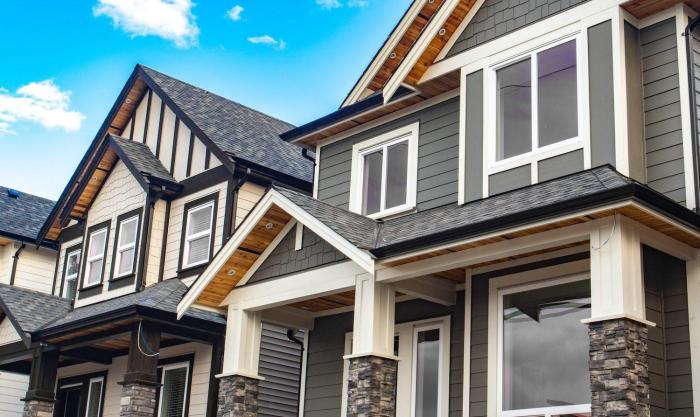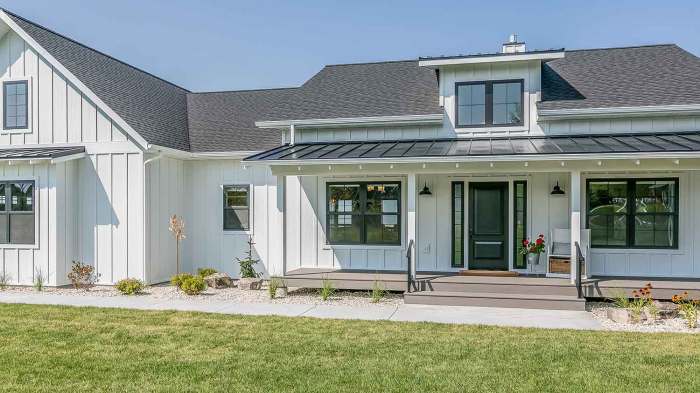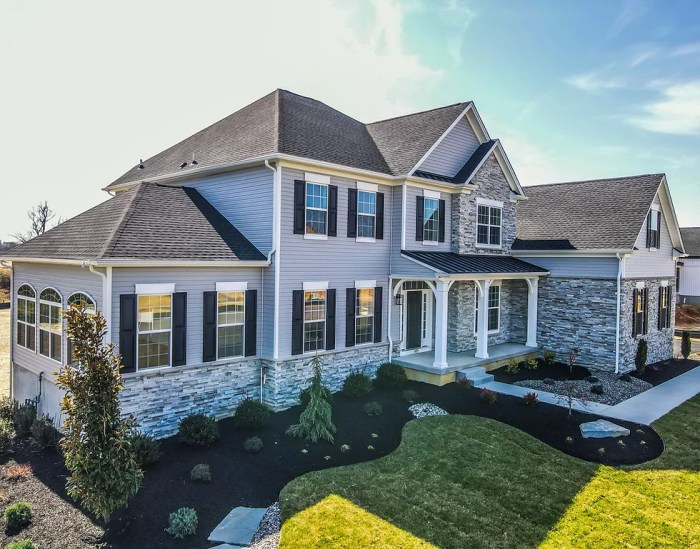Smart Building Investments with Long-Term ROI: A Futuristic Approach
Exploring the realm of Smart building investments with long-term ROI, this introduction sets the stage for an insightful discussion on the benefits, technologies, financial considerations, and future trends in this innovative field. The narrative style is engaging and informative, captivating readers from the onset.
The second paragraph provides a detailed overview of the importance of smart building investments, highlighting key benefits and successful project examples for long-term returns.
Importance of Smart Building Investments
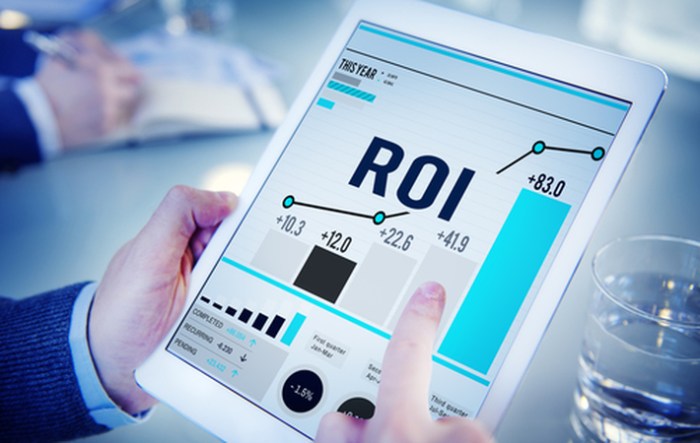
Smart building investments refer to the strategic allocation of resources towards integrating advanced technologies and systems within buildings to optimize operations, enhance occupant experience, and drive long-term financial returns. These investments are crucial in the modern era as businesses and property owners seek to leverage technology to improve efficiency, sustainability, and overall performance of their properties.
Key Benefits of Investing in Smart Building Technologies
- Cost Savings: Smart building technologies help reduce energy consumption, maintenance costs, and operational expenses through automation and optimization.
- Enhanced Tenant Satisfaction: By providing a comfortable, safe, and convenient environment, smart buildings attract and retain tenants, leading to increased occupancy rates and higher rental yields.
- Sustainability and Energy Efficiency: Implementing smart technologies such as IoT sensors, energy management systems, and renewable energy sources reduce carbon footprint and support environmental sustainability goals.
Successful Smart Building Projects with Long-Term Returns
- The Edge in Amsterdam: This smart building has achieved a BREEAM Outstanding rating, boasting features like solar panels, energy-efficient lighting, and smart climate control systems, resulting in significant energy savings and operational efficiency.
- One Bryant Park in New York City: Known as the "greenest skyscraper in the world," this LEED Platinum-certified building utilizes advanced technologies for water conservation, air quality monitoring, and waste management, leading to reduced operating costs and increased asset value.
Technologies Driving Smart Building Investments
Smart building investments are heavily influenced by the adoption of cutting-edge technologies that enhance efficiency, sustainability, and overall building performance. These technologies play a crucial role in transforming traditional buildings into intelligent, data-driven structures that can adapt and respond to various conditions in real-time.
IoT Devices and Sensors
IoT devices and sensors are instrumental in collecting and transmitting data within smart building systems. These devices can range from smart thermostats and occupancy sensors to air quality monitors and water leak detectors. By deploying a network of interconnected IoT devices, building operators can gain valuable insights into energy consumption patterns, occupancy levels, and environmental conditions, allowing for more informed decision-making and proactive maintenance strategies.
Artificial Intelligence and Machine Learning
Artificial intelligence (AI) and machine learning algorithms are utilized to optimize various aspects of smart building operations. These technologies can analyze vast amounts of data in real-time to identify trends, predict equipment failures, and automate energy management processes. AI-powered systems can also learn from historical data to continuously improve building performance and occupant comfort, ultimately leading to significant cost savings and enhanced sustainability.
Data Analytics and Cloud Computing
Data analytics and cloud computing are essential components of smart building infrastructure, enabling centralized data storage, processing, and analysis. By leveraging cloud-based platforms, building operators can access real-time insights, remotely monitor building performance, and implement predictive maintenance strategies. Data analytics tools provide actionable intelligence to improve energy efficiency, optimize space utilization, and enhance overall occupant experience.
The integration of data analytics and cloud computing solutions can drive operational efficiencies, reduce maintenance costs, and create a more sustainable built environment.
Financial Considerations for Smart Building Investments
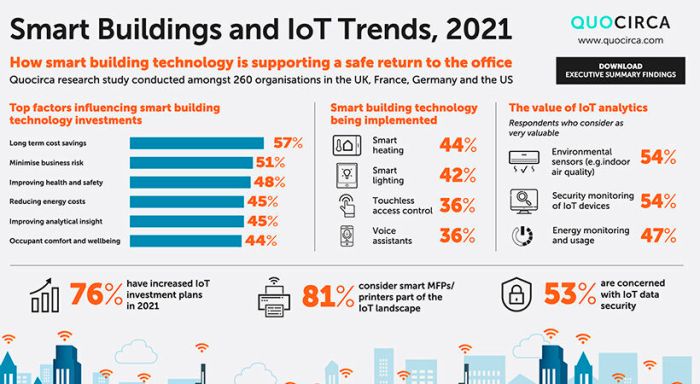
Investing in smart building technologies can lead to significant long-term benefits, but it's essential to consider the financial aspects before making any decisions. From initial costs to potential ROI calculations, understanding the financial implications is crucial for organizations looking to maximize their investments in smart buildings.
Initial Costs of Implementing Smart Building Solutions
Implementing smart building solutions comes with initial costs that include the purchase of hardware, software, installation, and integration with existing systems. Organizations need to budget for these expenses to ensure a smooth implementation process. Additionally, training costs for staff to use the new technologies effectively should be taken into account.
Calculating Potential ROI of Smart Building Investments
To calculate the potential ROI of smart building investments, organizations need to consider the savings generated by energy efficiency improvements, reduced maintenance costs, increased asset lifespan, and improved occupant satisfaction
ROI = (Net Profit / Cost of Investment) x 100
By analyzing these factors and comparing them to the initial investment, organizations can determine the potential return on investment and make informed decisions.
Financing Options for Smart Building Technologies
Organizations looking to invest in smart building technologies have various financing options available to them. These include traditional bank loans, government grants and incentives, energy performance contracts, and leasing arrangements. Each option has its advantages and considerations, so it's essential to evaluate which one aligns best with the organization's financial goals and capabilities.
Cost-effective Strategies for Maximizing Long-term ROI
To maximize long-term ROI in smart building projects, organizations can implement cost-effective strategies such as regular maintenance to ensure optimal performance of systems, leveraging data analytics to identify areas for improvement, and conducting regular audits to assess energy usage and identify opportunities for savings.
By continuously monitoring and optimizing smart building technologies, organizations can achieve sustainable returns on their investments.
Future Trends in Smart Building Investments
The future of smart building investments is poised to witness significant advancements driven by emerging technologies and sustainable practices. Let's delve into the key trends shaping the landscape of smart building development.
Predictive Maintenance and AI Integration
Predictive maintenance leveraging artificial intelligence (AI) algorithms will play a crucial role in enhancing the operational efficiency of smart buildings. By analyzing data from sensors and IoT devices, AI can predict equipment failures before they occur, enabling proactive maintenance and cost savings.
Enhanced Energy Management through IoT
The integration of Internet of Things (IoT) devices will revolutionize energy management in smart buildings. Real-time data analytics and smart controls will optimize energy consumption, reduce waste, and lower operational costs, making buildings more sustainable and environmentally friendly.
Focus on Indoor Air Quality
With an increasing emphasis on health and wellness, smart buildings will prioritize indoor air quality monitoring and management. Advanced sensors and ventilation systems will ensure optimal air quality, creating a healthier and more productive indoor environment for occupants.
Integration of 5G for Faster Connectivity
The rollout of 5G technology will significantly enhance connectivity within smart buildings, enabling faster data transmission and more efficient communication between devices. This improved connectivity will support the deployment of advanced applications such as augmented reality, virtual reality, and real-time analytics.
Sustainability Practices in Smart Building Design
Sustainability will be a key focus in future smart building investments, with developers incorporating green building practices and renewable energy sources. Features like solar panels, green roofs, and energy-efficient systems will not only reduce carbon footprint but also attract environmentally conscious tenants and investors.
Smart Building Automation and Integration
Automation and integration of various smart building systems will continue to evolve, streamlining operations, enhancing occupant comfort, and improving overall building performance. Centralized control systems and interoperable technologies will enable seamless communication between different building components, optimizing efficiency and productivity.
Conclusion
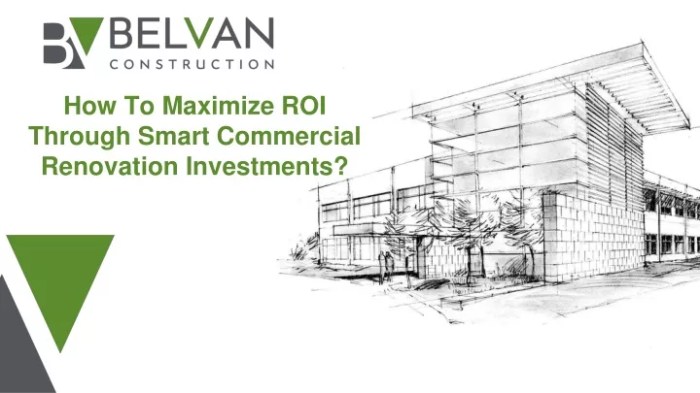
In conclusion, Smart building investments with long-term ROI offer a promising avenue for organizations seeking sustainable, efficient, and technologically advanced solutions. This summary encapsulates the essence of smart building investments and sets the tone for further exploration in this dynamic industry.
FAQ Insights
How can smart building investments contribute to sustainability?
Smart building investments can enhance sustainability by optimizing energy usage, reducing waste, and improving overall efficiency, leading to long-term environmental benefits.
What financing options are available for smart building investments?
Organizations can explore options like grants, loans, energy savings contracts, and leasing arrangements to finance smart building projects efficiently.
What are the upcoming trends in smart building technologies?
Future trends may include increased integration of IoT devices, enhanced data analytics capabilities, greater emphasis on cybersecurity, and advancements in AI-driven automation for smart building operations.

